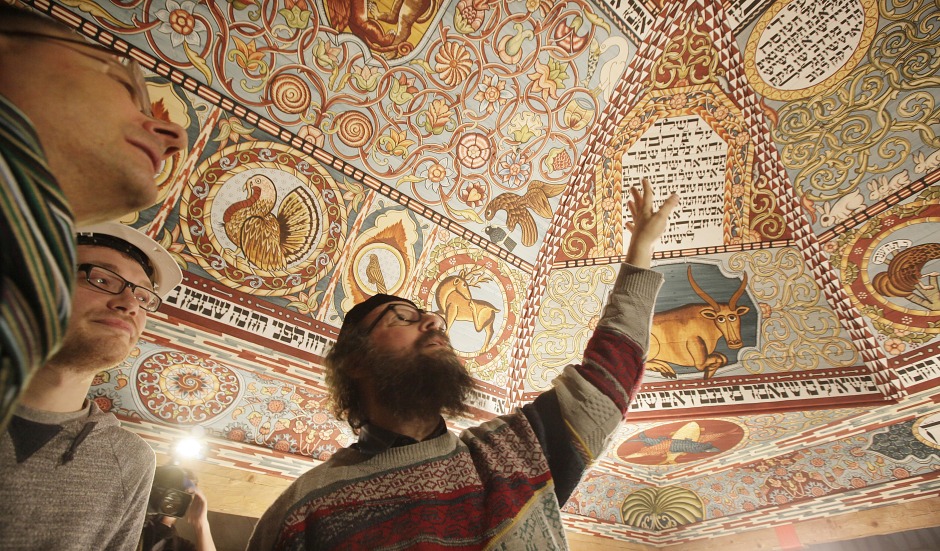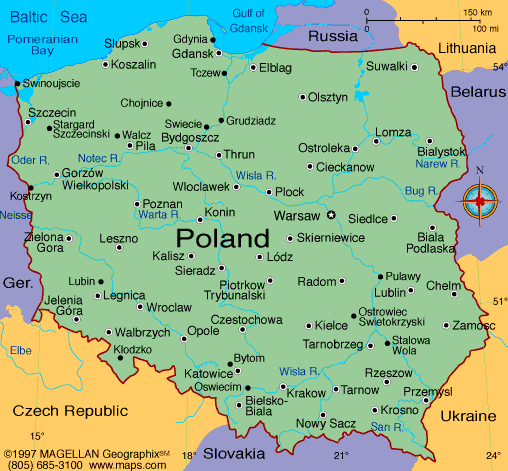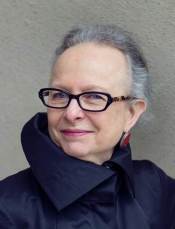The Museum of the History of Polish Jews, in Warsaw, was created from the inside out. Before there was a museum, before there was a building, before there was a collection, there was a plan for the exhibition.
The story — the thousand-year history of Polish Jews — came first. All else followed. The museum and the story it tells in the core exhibition will be an agent of transformation. Polish visitors will encounter a history of Poland, but in a way they have not experienced before. Jewish visitors will discover a history of what was once the largest Jewish community in the world and a center of the Jewish world — an estimated 70 percent of Jews today, more than nine million people, are thought to descend from this territory.

All visitors will encounter a Poland about which little is known and much misunderstood, a country that was one of the most diverse and tolerant in early modern Europe, a place where a Jewish minority was able to create a distinctive civilization while being part of the larger society.
As a result of the Holocaust, 90 percent of the Poland’s prewar Jewish population of 3.3 million Jews was murdered, and the world they created in Poland was destroyed with them. Those who survived, whether in hiding, concentration camps, or the Soviet Union, returned to a Poland that lay in ruins. What had been the largest Jewish community in the world was now one of the smallest, and a country that had been one of the most diverse was now one of the most homogeneous.
While the chasm created by the Holocaust can never be repaired, the exhibition and the programs it inspires can build bridges across the rupture. Those bridges could reconnect Jews abroad to their own histories in Europe. They could reconnect people living in Poland today to the Jewish past of their own towns and cities — and to those who descend from the Jews who once lived there.
What is the story the exhibition should tell and how should that story be told? While the exhibition avoids a master narrative, it is guided by12 concepts that underpin the story and our way of telling it.
Principle #1: We are often asked, “Which is the most important period in the history of Polish Jews?” For some, it is the Holocaust. For others, it is the postwar years, and for still others the interwar years. Our answer is always the same: the most important period in the history of Polish Jews is one thousand years — a millennium of continuous presence on Polish soil.
Principle #2: The history of Polish Jews is not a footnote to Polish history. Rather, the history of Polish Jews is an integral part of the history of Poland — and the history of Poland is not complete without a history of Polish Jews. We therefore avoided treating Polish history as a “context” for a separate Jewish story. Instead, we have constructed what could be called an integral rather than contextual history of Polish Jews, which is a way of saying that Polish Jews were of Poland and not only in Poland.
Principle #3: The exhibition presents a broad spectrum of relations, which visitors will experience as a story of coexistence and competition, conflict and cooperation, separation and integration — without reducing the history of Polish Jews to a history of Polish-Jewish relations (all too often treated as a history of antisemitism).

Principle #4: It is precisely the interplay of separation and integration that made possible the creation of a civilization that was “categorically Jewish, distinctly Polish,” in the words of Professor Moshe Rosman. It was in Kraków, in the sixteenth century, that Rabbi Moses Isserles, known by his Hebrew acronym as the Remu, adapted the Shulhan Arukh, a code of Jewish law, to reflect the practices of Polish Jews. This book, with the Remu’s notes, continues to guide the lives of Orthodox Jews to this day. A perfect expression of “categorically Jewish, distinctly Polish” are the magnificent wooden synagogues created during the period of the Polish-Lithuanian Commonwealth.
Principle #5: We tell the story from the perspectives of those whose story we are telling and we do so in the historical present — without foreshadowing and without back shadowing. Indeed, we ask visitors to “forget” what they already know about what happened later. We ask them to enter into the very moment of the events as they are unfolding. We do this by keeping the horizon in front of the visitor short, just as it was for those in the period, who could not see into the future. At the same time, the past gets longer with each step the visitor takes through the story.
This approach is especially powerful in the Holocaust gallery, which we base largely on the clandestine Oyneg Shabes archive organized by Emanuel Ringelblum in the Warsaw ghetto. Our approach is exceptional in basing the presentation of the Holocaust almost exclusively on documents that were created in the moment and on the spot. We do not use postwar survivor video testimony in the Holocaust gallery. Visitors will find thousands of survivor testimonies on video.
This narrative strategy is essential to the way the Holocaust figures in the 1,000-year history of Polish Jews presented in the exhibition. Most Holocaust exhibitions situate the Holocaust within a history of hate. The logical endpoint is genocide. In contrast, the history of Polish Jews does not start with hate and does not end with genocide. Nor does our telling of the story drive to the Holocaust as the inevitable endpoint of this thousand-year history. Jews in the Second Polish Republic were not “on the brink of destruction” — they did not see the Holocaust coming. We try to help our visitors experience this state of mind by narrating in the historical present.
Principle #6: We avoid taking as our starting point misperceptions (whether antisemitic and philosemitic stereotypes or the stereotype of “Polish antisemitism”) in order to defend the history of Polish Jews and the history of Poland against such mistaken ideas. A proper historical account should of course correct the record, but not defensively.
In other words, misconceptions should not set the agenda for what would become a defensive historical narration. Rather, our approach might be termed constructive engagement, with the intention to create a zone of trust for engaging difficult subjects: we must trust our visitors as people of good faith, and they must trust us to be intellectually honest. Controversies will no doubt arise. All histories are controversial. That said, the goal of the exhibition is not to create consensus, which is not possible in any case. The goal is, rather, to create an exhibition worthy of debates worth having.

Principle #7: The history of Polish Jews is the history of all Polish Jews, not just its heroes and elites. The exhibition does not take as its starting point the demonstration of Jewish worthiness, whether in collective or individual terms. An apologetic history would organize the exhibition around important people because they are important and showcase Jewish achievement — the contribution of Jews to the fields of politics, medicine, the arts, science, mathematics, and philosophy — for its own sake.
That said, the leading role of key individuals finds its proper place in the exhibition’s historical narrative — Berek Joselewicz, Ludwik Zamenhof, Julian Tuwim, Isaac Bashevis Singer, Artur Rubenstein, Bronisław Huberman, Jerzy Petersburski, Janusz Morgenstern, Marek Edelman, Alina Sapocznikow, and many others — without reducing the history of Polish Jews to the stories of great individuals as such and to their contributions to the world per se.
Principle #8: Keep open questions that seem to beg for definition. Some said the exhibition should answer two questions, even before visitors entered the poetic Forest gallery that begins the 1000-year journey: Who are the Jews? What is Judaism? Rather than providing a priori definitions, we ask our visitors to look for answers in the history of Polish Jews. There are many ways to be Jewish. Who is a Polish Jew remains an open question, and Polish Jews continue to be a work in progress.
Principle #9: Bring the visitor face to face with those whose story we tell. This is history in the first person, which is why we lead the narration with quotations from primary sources.
Our goal is to bring the visitor close to those who lived in the place and moment of the story. Featured are the words of Jan Zamoyski, who contracted his Jewish leaseholder Jakub Nossałowicz in 1595; Natan Hanover, who recorded the massacres during the Khmelnytsky uprising in 1648–1649; Paulina Wengeroff, who recalled the transformation of Jewish life in the 19th century; young Jews who responded to autobiography contests organized by the YIVO Institute for Jewish Research in the 1930s; and those surveyed by Sara Hurvic (later, Irena Nowakowska), a sociologist who sent questionnaires to Jews in Poland in 1948.
Principle #10: Our goal is to be authoritative without being authoritarian, to create an open narrative in multiple voices, and to invite visitors to add their voices to the chorus. Our commentary, what we as scholars have written, appears in its own font and on its own panel. That commentary supports the quotations from primary sources and helps to fill gaps and connect the texts, images, iconography, scenography, objects, documents, films, and sound that together carry the story.
Principle #11: Materialize history in the absence of original objects. If we had more objects, we would have used them, but for the medieval period, almost 600 years, we can point to only two objects that Jews in Poland made: tombstones and coins. Tombstones, the oldest of which dates from 1203, are immovable, and coins, no matter how beautiful they are with their Hebrew inscriptions, are tiny, and the story we must tell is deep and wide. What we do have are texts, the most important of which come from rabbis in German lands who responded to questions from rabbis who were passing through or living in Poland.

Principle #12: Enter a theater of history, a story told in four dimensions — time is the fourth dimension. Only as the visitor moves does the story unfold. Younger visitors, whose natural inclination is to learn by trial and error (rather than to read the manual), will intuitively find their way through the story. Experienced museum goers may expect a more explicit road map. They may not be used to making their way through a continuous visual narrative that is organized in acts and scenes, much like a play. They may be surprised to find themselves on the stage and in the scenography, not on the other side of the proscenium. That said, there will be group tours, self-guided tours, highlight tours, audio-guides, and proposals for various other ways to visit the exhibition.
The Museum of the History of Polish Jews is part of the very history that it presents. It is an agent in that history and not simply a mirrored reflection of it. Our goal is to create an exhibition that is memorable. To be memorable, the experience must be emotional, but to be worth remembering, it must be thought provoking.
There is no end to the debates provoked by any history of Polish Jews, not least the one presented in the core exhibition. Our challenge is to create an exhibition worthy of debates worth having, including those that will surely arise from the exhibition itself.
Barbara Kirshenblatt-Gimblett is program director, Core Exhibition, of the Museum of the History of Polish Jews in Warsaw.
This essay, which has been edited for length, appeared in Polish translation in Tygodnik Powszechny, an ecumenical Catholic weekly, in a supplement published on the occasion of the grand opening on Oct. 28 of the Core Exhibition of the Museum of the History of Polish Jews.


